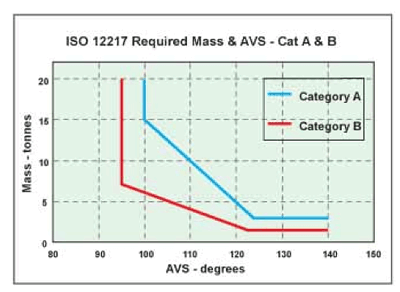I had private chat discussion with a SBO member who had logged 26,000+ sailing miles on the exact year and model of my boat, Hunter 430.
He has sailed from Aleutians down to Upper South America and back several times in open Pacific Waters.
He was going through the Panama Canal on his way to Miami when he appeared on SBO. Last I heard from him, he was crossing the Gulf to New Orleans. This is not to say, he didn't make it there.
I asked what the biggest seas "our Category A" boat had seen.
Ans: ≈ 20 foot
How was the ride?
Ans: No problem. He said the theoretical Hull speed is exceeded when "surfing" those waves. about 12 knots versus ≈8 knots.
He then added this additional "Safety" information about this Hunter.
"There is no way to put the rails in the water, while under sail!" In other words, tipping the boat over.
Have you ever feared losing the boat to the weather and sea?
Ans: No.
__________
My experience is not so Adventuresome.
≈8 foot seas, 35 knot winds, blinding rain, Lightning .... Cabin closed, engine running, Main sail full, no headsail.
Ans: No problems, but what a ride!
What I have tried and experienced that may be just my boat, but I suspect is Hunter design 1995-2002 at least.
Ans: With no seas, steady 20 knot winds, close reach, full OEM main and headsail furled.
My boat tended to bow down or nose into the water, thus raising the rudder a bit. Helm control was tough. As I pulled of close reach, her nose came up and rudder control was easy. In Auto Pilot, the boat reacted the same way.
Wind gusts didn't seem to matter, since as the boat heeled a bit more, the sails "spilled the wind gust"
My Conclusions for my Hunter.
I am not worried about my Class A boat in open waters, but matching the sea condition, winds and sail reefing makes me, the Captain, responsible for my boat.
Jim...
 .
. 
